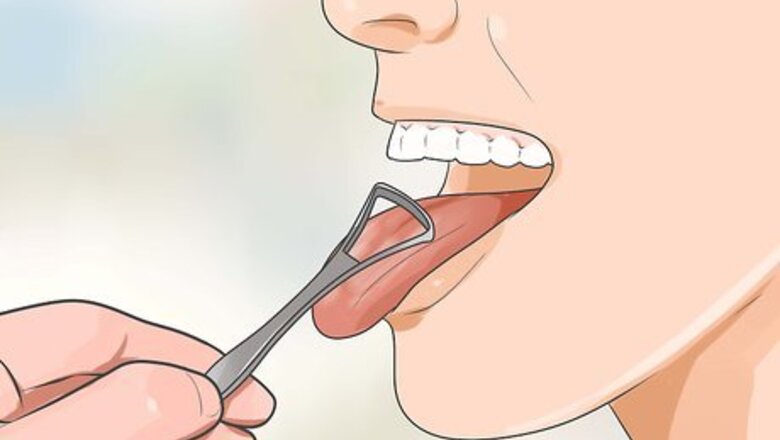
views
Reducing Your Gag Reflex
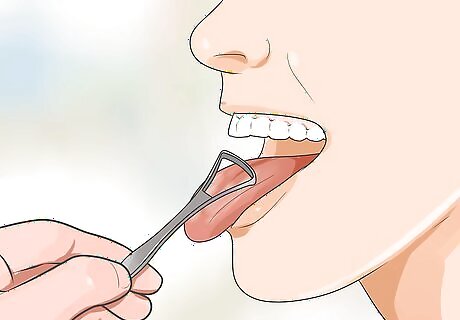
Try a desensitization process on your gag reflex. While you might assume that your gag reflex is set in stone, it may in fact be possible for you to retrain and reduce it. Basically, you want to slowly and steadily take yourself to your gagging limit, which will over time creep further back on your tongue. Stick your tongue out as far as possible, and press it down against the bottom of your mouth. Start to gently work your brush or scraper back from the tip of your tongue. When you just begin to feel the beginning of your gag reflex, stop moving back and gently massage that area of the tongue for ten seconds. Repeat this process once or twice per day, and you may find that you are able push your gag threshold further back in your mouth over time.
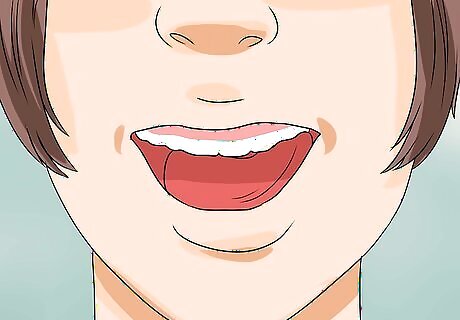
Distract yourself from anticipating your gag reflex. Especially if you’re anxious or have had problems with gagging before, you may begin feeling an anticipatory gag reflex before you actually reach your threshold. See if you can instead take your mind off what you’re doing. Try humming a tune while you clean, or even just try saying “aaaaahhhhh” like you might when the doctor checks your throat. Make a tight fist with your thumb tucked inside. There is an element of distraction through pain here, but also some evidence that accessing a pressure point in your palm can actually reduce your gag reflex.
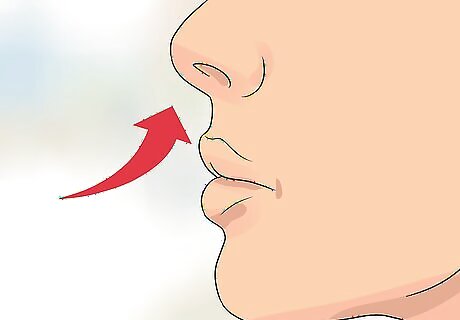
Breathe through your nose while cleaning your tongue. For many people, breathing through the mouth seems to increase the gag reflex. Focus on breathing through your nose while cleaning your mouth, and see if your results improve. Taking shallower, more rapid breaths can also help reduce the gag reflex in some people.

Clean your tongue on an empty stomach. While the correlation is not universal nor entirely clear, your gag reflex may increase in proportion to the fullness of your stomach. Essentially, if you’ve just eaten a big breakfast, you may gag more easily than you would have before the meal. Also, if gagging causes you to vomit, there are obvious practical benefits to not having a full stomach at the time.
Gargle water several times a day. Use regular water or salt water and gargle for as long as possible. This will strengthen your cranial nerves, which are responsible for your gag reflex. Expect to tear up a bit, which means that the nerves have been fully activated. The more frequently you do this, the longer you’ll be able to gargle each time.
Laugh and sing to strengthen your nervous system. Singing at the top of your lungs works the muscles at the back of your throat, but humming and chanting will help these muscles as well. Laughing may be capable of stimulating an important nerve that works in your throat and with your gag reflex.
Try acupuncture to manage your gag reflex. Studies have indicated that acupuncture can help relax a gag reflex when needles are placed on the wrist or chin. Make an appointment with an acupuncturist and describe your problem. They should be able to help you develop some at-home tricks to use when you clean your tongue.
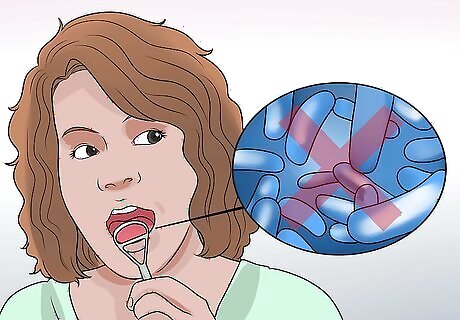
Do the best you can to clean your tongue. Your tongue harbors up to 500 types of bacteria at any one time, many of which can cause bad breath and potentially lead to a range of other more serious dental and medical concerns. Most of the bacteria hang out on the back of your tongue, but if you simply can’t get back that far without gagging, at least clean the parts of your tongue you can tolerate. You’ll still be improving your oral health. While it can’t clear away the caked on layers of tongue bacteria like a good scraper or brush, an antimicrobial mouthwash (like Listerine) can kill a significant number of mouth bacteria. While best used in combination with proper tongue cleaning, antimicrobial rinses alone are better than nothing for those with severe gagging issues.
Brushing Your Tongue
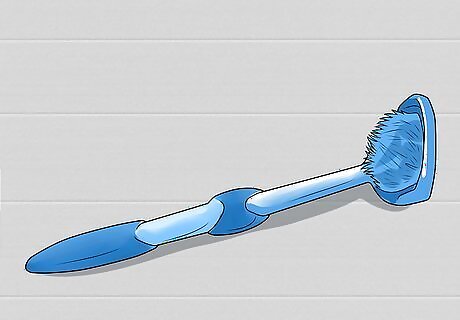
Use a soft-bristled toothbrush or a specially designed tongue brush. In either case, moisten the brush with water and rinse it periodically while cleaning. You want to clean your tongue thoroughly, but not make it bleed and/or cause short-term damage to your taste buds, so don’t use a hard-bristled brush or scrub too aggressively. You don’t need to add toothpaste, or any other product than water.

Find your most comfortable tongue brushing pattern. Your natural inclination will probably be to brush in a parallel direction to your tongue — that is, from tip to back and back to tip. If you can do it this way without gagging, that’s fine; if not, consider circular or perpendicular techniques. Brushing in small, circular motions may allow you to ease further back on your tongue without engaging your gag reflex — as opposed to what happens when you’re jabbing the brush towards the back of your throat. Perpendicular (or side-to-side) brushing also prevents the brush from poking towards the back of your throat. With this method, you’ll have more control over exactly how far back on your tongue the brush reaches.

Rinse your mouth with water. Antimicrobial rinses (like Listerine) may help further reduce mouth bacteria, but using plain, clean water to rinse out your mouth is perfectly acceptable. Remember that you’re trying to expel this loosened tongue bacteria, so spit out the water instead of swallowing it.
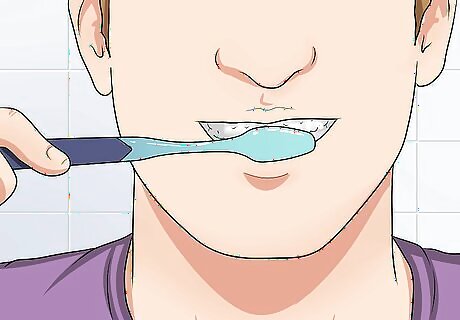
Brush your tongue before or after you brush your teeth. Either pattern works equally well; the important thing is to clean both these parts of your mouth frequently. If you brush your tongue as often as you brush your teeth, you’ll reduce the amount of buildup you need to clean off. If your tongue feels raw or bleeds, give it a day or two to recover. Instead of reducing your cleaning frequency long-term, though, try not pressing as hard or find a softer brush (or a scraper).
Scraping Your Tongue

Choose a tongue scraper that suits your needs. Tongue scrapers come in many shapes and sizes, but if you have a strong gag reflex, a low-profile model is likely your best bet. Scrapers that get closer to the roof of your mouth are more likely to trigger your gag reflex. If even small scrapers are problematic for you, you can try using dental floss instead. Its ultra-low profile on your tongue should help keep your gag reflex at bay. You can even try wrapping a clean, damp, thin washcloth over your first two fingers and using that as your homemade scraper.

Extend your tongue while pressing it to the floor of your mouth. The more of your tongue you can get away from the back and roof of your mouth, the better. In addition to helping keep your gag reflex at bay, this also enables you to place the scraper more precisely and see your progress more clearly.
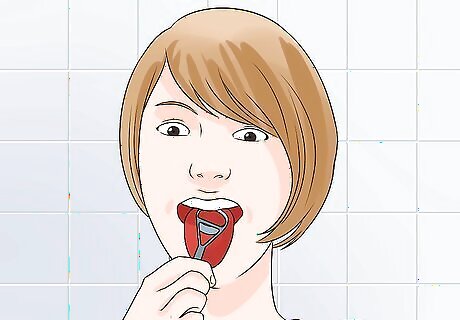
Scrape your tongue only from back to front. Place the scraper on your tongue as far back as you comfortably can, and draw it along the surface until you pass beyond the tip of your tongue. Make firm contact, but don’t press as though you’re trying to scrape paint off a surface. You’ll probably pull a lot of gunk off of your tongue, so rinse the scraper with clean water after each pass. Repeat the process until you’ve covered as much of your tongue as your gag reflex will permit.
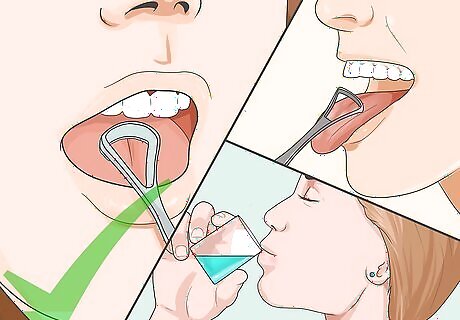
Rinse and repeat as part of your regular oral hygiene regimen. Rinse and spit with clean water or an antimicrobial mouthwash after you finish scraping. You can and should scrape your tongue every time you brush (either before or after brushing). Brushing or scraping your tongue are equally effective at reducing bacterial buildup, so it’s not important which technique works best for you — what is important is that you clean your tongue regularly.




















Comments
0 comment